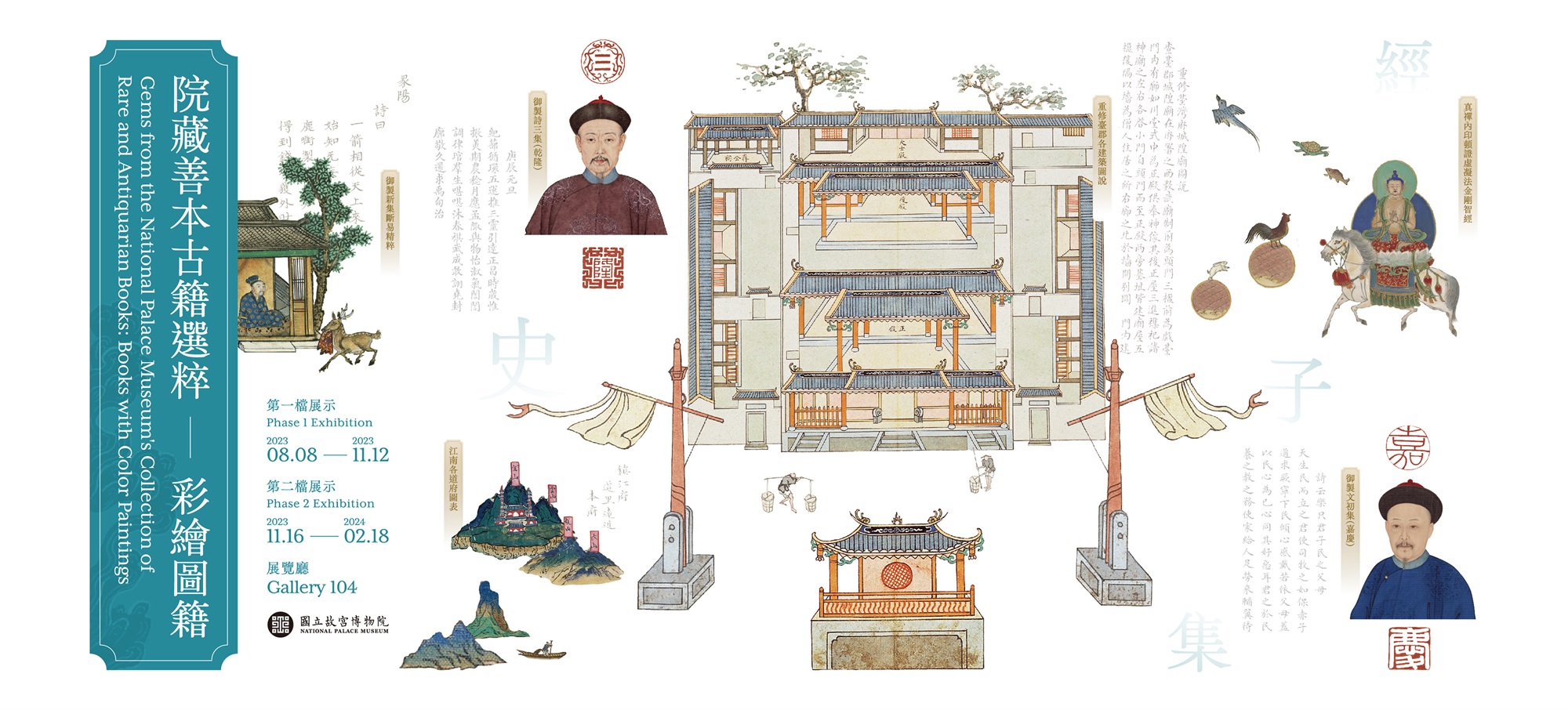The Art of Divining
The Art of Divining: Books on I Ching Divination, Prognostication, and Interpreting Portents
The character for “divination” in Chinese is a general term used for predicting matters of the unknown. Since antiquity, it has referred to foretelling both fortuitous and inauspicious things. Various techniques for divining the future, such as reading the cracks on ox bones and turtle plastrons formed by heating with an instrument, the prepared stalks of a plant known as yarrow based on the 64 I Ching hexagrams in the Changes of Zhou, and the patterns of celestial bodies observed in the evening sky. Responding to the needs of fortunetelling, books on the art of divining appeared and evolved over the years, becoming increasingly common. From the “Treatise on Literary Works” section of Ban Gu’s (32-92) Hanshu (Book of the [Former] Han) comes one of the categories of six arts, “Various Strategies for Divination,” in which appear such sections as “Astronomical Signs,” “Yarrow and Turtle,” and “Various Divinations.” They clearly show that by the Eastern Han dynasty, books on the art of divination had become quite numerous.
Judging from the traditional division of ancient Chinese books into classics, histories, masters, and anthologies, texts on divination were generally placed in the category of masters under the subsection for various forms of foretelling. On display in this part of the exhibition are such books as Yuzhi xinji duanyi jingsui (Imperial Production of a New Anthology on the Essence of Analyzing the I Ching), Taiyi jicheng (Synthesis of the Taiyi), and Datong tongzhan (Comprehensive Divinations of Great Unity), which belong to the categories of I Ching divination, prognostication, and interpreting portents. All three are painted manuscript editions from the Ming dynasty (1368-1644) court. Written in the official academic script most popular at the time, the paintings are also in the opulent colors typical of the Ming court style.
-
Yuzhi Xinji Duanyi Jingcui
Imperially Endorsed New Collection of Essentials on the Interpretation of the Yi Jing
Ordered to be made by Chenghua Emperor, Ming dynasty
Imperial court illustrated manuscript, Chenghua reign (1465-1487), Ming dynastyYuzhi Xinji Duanyi Jingcui, which consists of 66 volumes (55 of which have survived today), is an imperial court illustrated manuscript in the collection of the Qing dynasty Imperial Household Department in the 15th century. Overseen by Emperor Chenghua (1447-1487), Yuzhi Xinji Duanyi Jingcui was compiled using divination-related books such as Duanyi Shenjian (“Explanations on the Interpretation of the Yi Jing”) and Geduanyiying (“Details on the Interpretation of the Yi Jing”) in 1482; both of these books are now lost. The collection is surmised to contain the 64 possible hexagrams of Yi Jing (with one volume designated to each hexagram), and the titles of the hexagrams were written on the cover. In addition to offering drawings that explain the hexagrams and presenting hexagram poems, the most eye-catching part of the collection is the drawings created according to the content of the poems. The drawings, which are generally found to the right of the poems, are delicate, exquisite, and colorful. The quality of the drawings is inconsistent, suggesting that they may have been drawn by different artists.
-
Taiyi Jicheng
Integrated Divination of Supreme Oneness
Anonymous
Manuscript copy with colour illustrations, Ming dynasty“Taiyi” (divination of supreme oneness) refers to the supreme god in heaven and on Earth. In ancient times, people used the math in Taiyi Jicheng to tell the fate or political situations of a country. Taiyi Jicheng gathers all the things controlled and known by gods, such as the weather, floods, droughts, and military revolutions. This manuscript copy with color illustrations in the collection of the Ming dynasty Imperial Household Department contains text written in regular script with vermilion boxes and without column boxes; and has rich and brightly colored drawings created using colors such as azure, malachite, ochre, bright yellow, and peach red. The drawings outline the appearance of a god riding a tiger and holding a sword, protecting his soldiers in majestic fashion.
-
Datong Tongzhan
Datong Calendar [of Ming Dynasty] Manual to Astrology
Written by Liu Zhe, Ming dynasty (1368-1644)
Ming manuscript copy in black lined columns with colour illustrationsObserving the changes in constellations and using it as a basis for telling emperors’ future actions, a country’s destiny, droughts, and floods had always been one of the goals in ancient Chinese astrology and astronomy. Therefore, since ancient times, many divination books explaining astrology have been produced. Datong Tongzhan is believed to have been compiled by the Imperial Astronomical Bureau and Board of Mathematics from 1406 to 1425 (Yongle reign, Ming dynasty). Although a large portion of Datong Tongzhan is now missing, one can still deduce that the manual was written based on stars and constellations. Many predictions pertaining to what constellational changes signified before the Ming dynasty can also be found in the manuscript. The manuscript was written in regular script and contains colored constellation illustrations, revealing ancient people’s keen observations.


